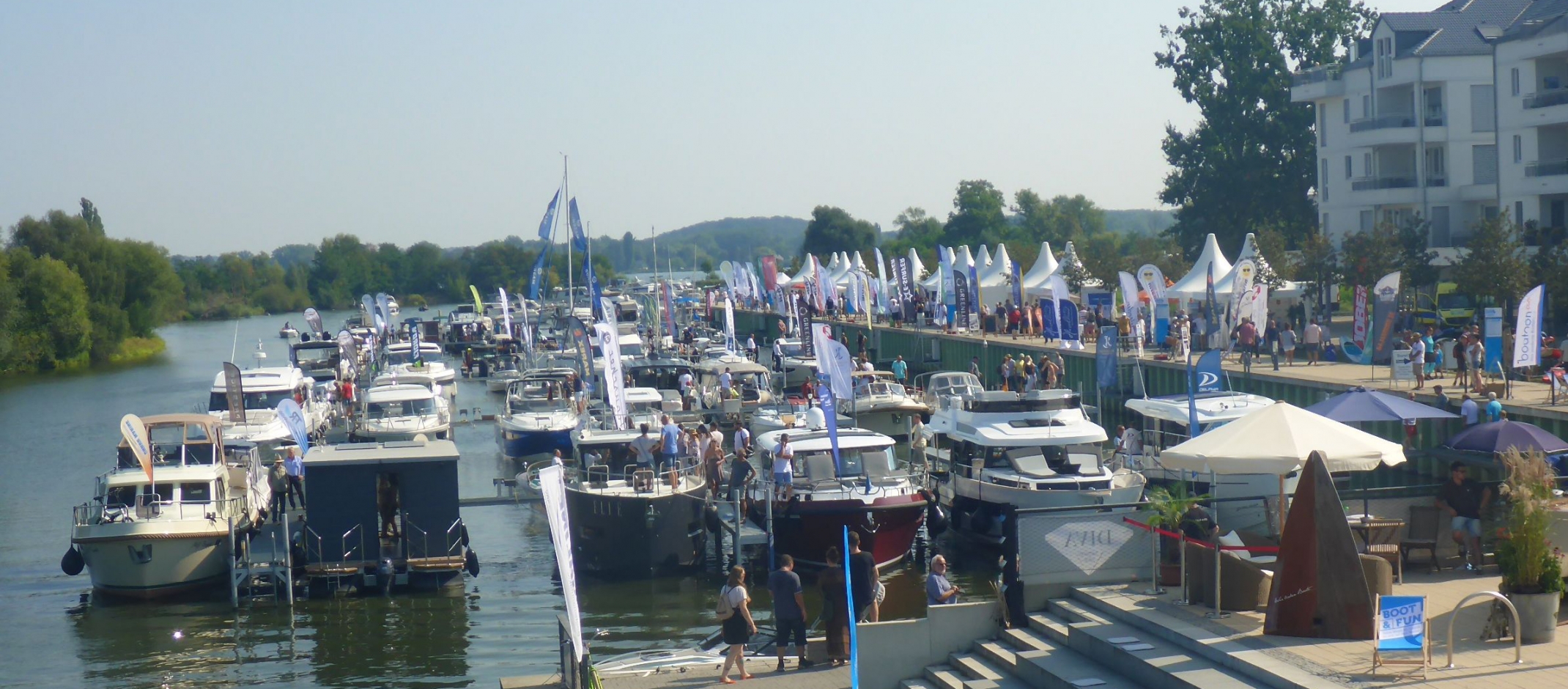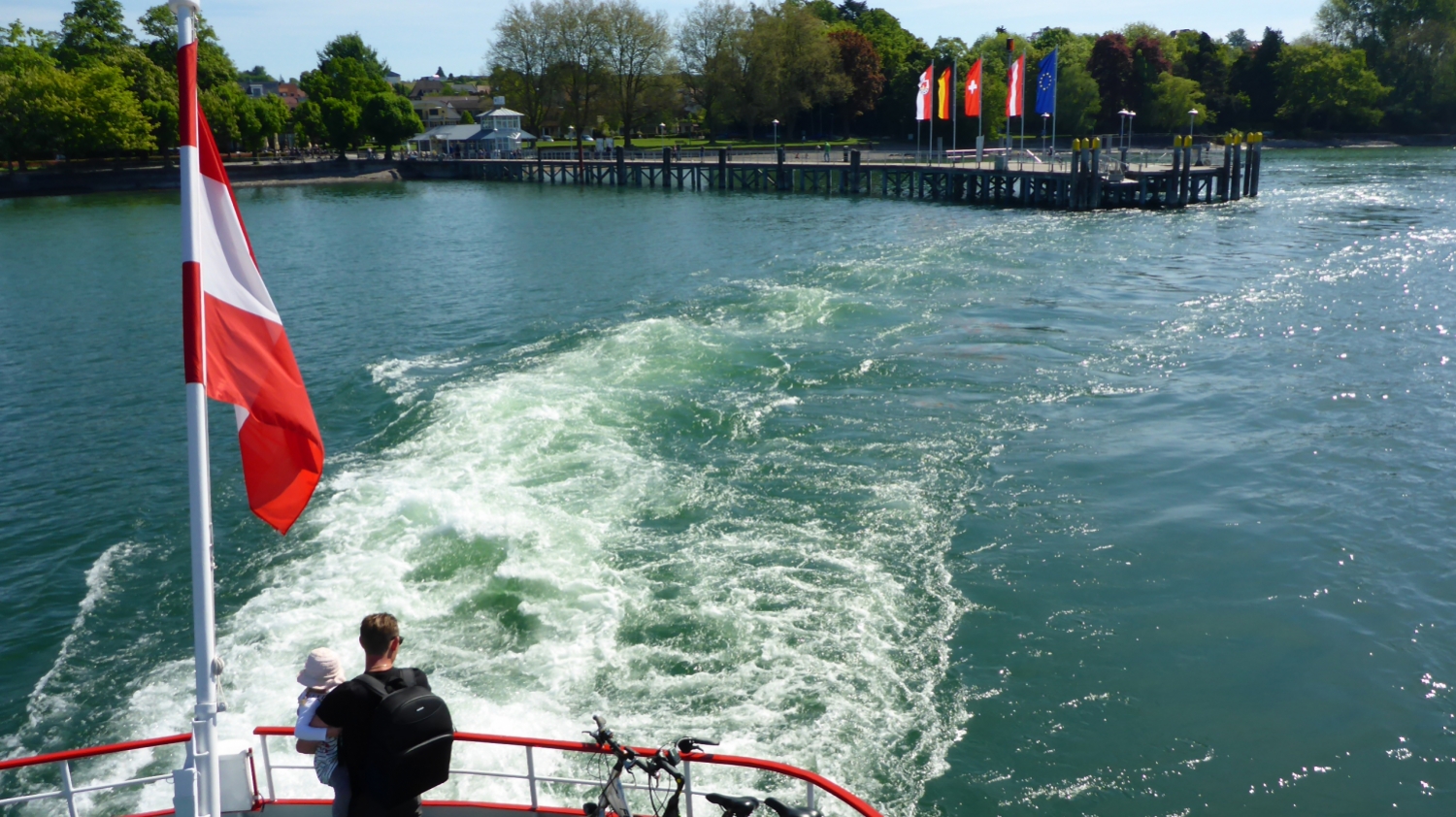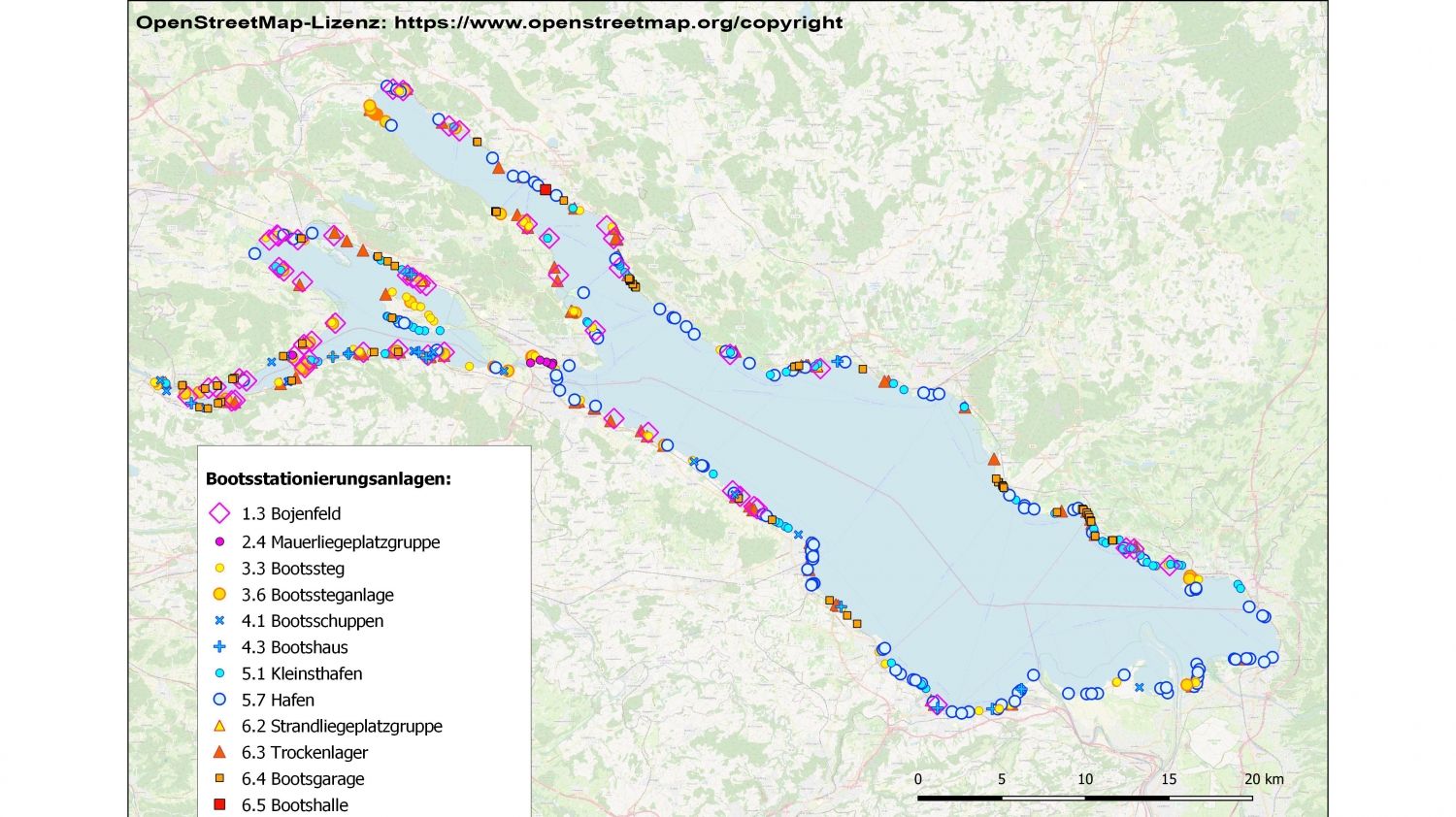A close look at recreational boating on German lakes

Researchers from the University of Konstanz's Limnological Institute and the Brandenburg State Office for the Environment closely studied the effects of growing motorboat usage on lakes and developed recommendations to make boating more environmentally friendly. In the research project SuBoLakes (Sustainable Boating on Lakes in Germany), which was conducted between 2021 and 2025 and funded by German Federal Environmental Foundation (DBU), the team investigated the impact of boating on several lake districts in Germany. The results of this project have now been published in a detailed report.
In contrast to the global goals of the European Water Framework Directive (WFD) that should be met by 2027, most of Germany's lakes are not in good ecological state. The poor ecological state of the lakes is due to a broad array of anthropogenic interferences. One of these is motorized water sports, which has a negative impact on the vulnerable lakeshore zone, for example, as a result of wave action, waterside constructions and spaces used for boating infrastructure like docks and marinas.
© W. OstendorpThe motorship Austria, powered by 2 Voith-Schneider motors with a total of 1,492 horsepower (1,097 kW), leaves the dock in Kressbronn am Bodensee.
Ship waves damage shorelines
"Passenger ships and big motorboats negatively impact shorelines near their routes. The waves generated by these vessels affect the plants and animals living in the shallow water zone and can resuspend and displace sediments", explains Frank Peeters, professor of environmental physics at the University of Konstanz. Peeters, who coordinated the SuBoLakes project, measured ship waves and modelled their spread across the lake. He found that the impact of ship waves at the shoreline depends on the number of ship passages in front of a shoreline location and on the height and length of the waves generated by the vessel. Smaller ships produced smaller waves than larger ones. And the slower a ship moves, the smaller the height and wavelength of the ship wave. In addition to this, waves decrease in height the farther they travel.
As a result, Peeters recommends limiting the intensity of boat travel and the maximum size of recreational boats, setting minimum distances from the shore for ships traveling parallel to the shoreline and defining corresponding speed limits.
"In highly vulnerable areas there should be regulations for more distant navigation routes and speed limits. For such measures to be effective, ships must reduce their speed significantly some time before they enter these areas."
Frank Peeters, professor of environmental physics at the University of Konstanz
Particularly harmful at low water levels
The shallow water zone which is impacted by ship waves also depends on the lake level. With this in mind, the researchers warn against expanding recreational and passenger ship travel in periods when water levels are low, for example, during the winter season on Lake Constance. Instead, they argue that more frequent low water periods must be addressed with an adaptive strategy within new concepts for sustainable recreational boating.
Waves also lead to greater greenhouse gas emissions from the lake, since they trigger the release of gases stored in sediments. Since these gases mainly consist of methane, this causes more methane to be released into the atmosphere, especially in summer. Adaptive measures to reduce the negative effects of ship waves on the shoreline thus also contribute to lower greenhouse emissions from lakes.
Shoreline development
Yet, even when leisure boats and passenger ships lie still in the harbours, they will cause environmental problems. Not only do they release pollutants into the water, e.g. biocides from conventional anti-fouling paints, but the main issue is that berthing infrastructure encroaches on valuable aquatic ecosystems. Europe's coastlines and inland waterways have 10,600 harbours or marinas with 1.14 million berth places for approximately 5.74 million boots. There is a very high density of boats on Lake Constance – 112 watercraft per km2 of lake surface or about one boat per 5 m of shoreline. By comparison with the total number of boats in both Germany and Switzerland, the lake holds about 10% of the amount of boats in both countries. On Lake Constance alone, approximately 618 individual buoy fields, docks, harbours, marinas and other kinds of berthing facilities cover an area of more than 4.4 km2 (image). Each officially authorized berth requires an area of 150 square metres on land and on the water.
© J. u. W. Ostendorp.Overview of boating infrastructure on Lake Constance. Map based on: © OpenStreetMap contributors (OSM) / OpenStreetMap licence.
A new method based on aerial images developed by researchers at the Limnological Institute reveals the spatial extent and ecological impact of berth infrastructure. "We see a lot of negative effects on the aquatic environment that, in light of increasing water tourism, we simply cannot ignore", says Wolfgang Ostendorp from the Limnological Institute. He would like to make the analytical procedure available to the relevant authorities and motorboat sport associations, as a decision-making tool to help them exercise more restraint when it comes to valuable shoreline ecosystems.
An appeal to policy makers
"Overall, we currently have an insufficient data and planning basis in the area of motorized water sports", emphasizes Ralf Köhler from the Brandenburg State Office for the Environment: "This means we cannot ensure that the future development of the recreational boating and passenger ship sector is compatible with the goals of environment and nature conservation". He thus advocates for the following:
- Establishing a central digital boat register for all boats requiring an official licence plate, modelled after the Central Vehicle Register for automobiles
- Introduction of a boat tax calculated on the basis of the size of the boat, motor horsepower and emission standard (and earmarked for funding parts of ecological remediation and improvement measures)
- A nationwide operating licence requirement for all boats requiring an official licence plate, as has already been the case for years on Lake Constance
- Legal framework for improved protection of littoral (shoreline) areas and aquatic plant populations in federal and state regulations
- Concepts and strategies for adapting recreational boating and water tourism in response to climate change and low water phases in navigable lakes and rivers
- Continuous monitoring of trends in the recreational boating and passenger ship sector in order to identify negative developments and the associated risks early on and provide critical corresponding support
The authors of the study fear that an intensification of passenger transport and recreational boating on lakes in Germany (water tourism) will significantly increase the negative impacts on shoreline ecosystems if no protective measures are taken. The report is not just aimed at authorities. "Of course, skippers, regional planners and the tourism industry should also be included in the decision-making process", project leader Frank Peeters emphasizes.
"Local action is necessary, in order to respond to acute problems and provide optimal protection for littoral areas that are at high risk. In addition to this, Germany needs a nationwide strategy for developing sustainable motorboat sport activity on its lakes that ensures water and nature conservation are given appropriate consideration."
Ralf Köhler, project leader at Brandenburg State Office for the Environment
The researchers are counting on water sports associations that are already advocating for reducing pressures on lake ecosystems. These associations could serve as multipliers for promoting more environmentally friendly treatment of littoral areas already under a lot of pressure.


